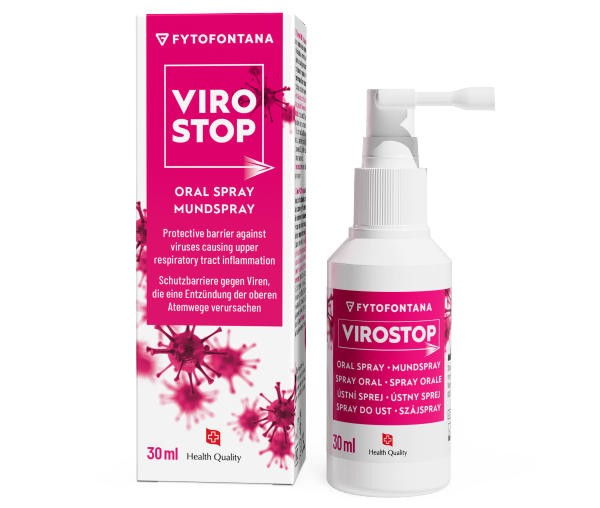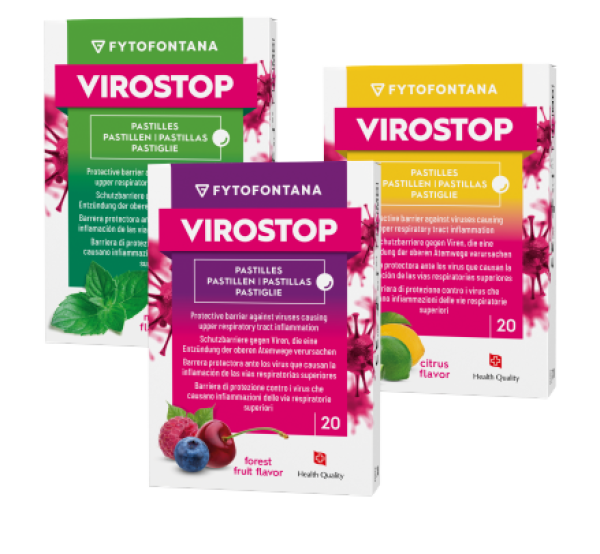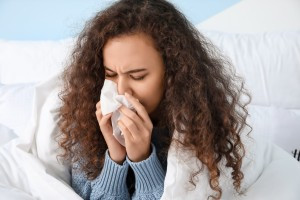Suffering from a cold or flu? Find out how you can directly block viruses instead of just suppressing symptoms.
When beginning treatment for any illness, it's crucial to understand what we can expect from therapy. Symptomatic treatment and causal treatment are distinguished by their purpose. What hides behind these specialized terms? How is it possible that VIROSTOP can cover both methods of treatment, and what does this mean for therapy of upper respiratory tract viral infections?
How does the treatment of an illness proceed?
We become aware of an illness when we experience unpleasant symptoms. These symptoms inform us that something is wrong in the body and prompt us to seek treatment or consult a doctor. These manifestations are usually not entirely specific, and several causes can trigger them.
If we have a fever, there can be dozens or even hundreds of causes behind it, but the symptom is common. If we choose treatment that only alleviates the ongoing symptom, we refer to it as symptomatic treatment. It has universal application, usually quickly alleviating discomfort, but it does not treat the underlying cause. This means that after the effect wears off, the discomfort usually returns with the same intensity.
Until we determine what specifically caused the symptoms, we cannot treat them effectively. That's why we often resort to self-tests at home or visit a doctor for a detailed examination. Once a diagnosis is established, treatment can be targeted, and as the cause of the illness is addressed, the symptoms gradually subside. This precisely targeted treatment of the cause of the illness is called causal treatment.
Symptomatic and causal treatment of upper respiratory tract infections
The fundamental symptoms of upper respiratory tract infections include:
- Runny or stuffy nose
- Coughing
- Pain and discomfort in the affected area
- Elevated temperature or fever
Each of these symptoms can be alleviated with appropriate medication or other measures. For instance, various sprays aimed at quickly reducing mucosal swelling and relieving the sensation of nasal congestion are recommended. Coughing is also merely a symptom, and depending on its nature, we can opt for better dissolution of accumulated mucus or soothing irritation for dry coughs. Pain and fever medications may temporarily alleviate fever but do not truly treat the underlying illness.
However, there can be many underlying causes of these symptoms. Typically, they are caused by viral or bacterial infections, less frequently by fungal infections, allergic causes, irritation, or injury to the respiratory mucosa, among others. Fortunately, patients now also resort to home self-tests to determine the level of CRP to ascertain whether they can manage viral treatment at home or need to visit a doctor due to suspicion of a bacterial infection.
Once the cause is identified, targeted treatment, known as causal treatment, can be initiated. In the case of bacterial infections, this means the doctor will prescribe appropriate antibiotics. Treatment then involves symptomatic treatment until the antibiotics take full effect. Subsequently, the symptoms will begin to recede, and symptomatic treatment can be discontinued.
In the case of viral infections, for a long time we had no other option than to help ourselves with symptomatic treatment, until the body itself suppressed the viral infection. Only in severe cases do doctors resort to antiviral drugs. Fortunately, thanks to VIROSTOP products, the situation has recently changed and we finally have the opportunity to act directly against virus particles even in common viral infections of the upper respiratory tract.
VIROSTOP effectively suppresses symptoms while also combating viruses
VIROSTOP products are based on potent extracts from 5 plants. Thanks to this, they contain a mixture of diverse compounds from Cretan cistus, common sage, purple coneflower, acerola, and citrus bioflavonoids. Most of these compounds belong to the group of polyphenols and have the ability to directly bind to binding sites on viral particles. By mechanically preventing them from binding to the cells of our mucous membranes, they block their ability to enter and infect the cell. In this way, through natural means, we can slow down or even stop the progression of viral infection and directly act against viruses.
Moreover, the compounds from these 5 plants also have symptomatic effects, easing nasal breathing, relieving pain, and soothing throat irritation. For maximum effectiveness, we should use a combination of VIROSTOP nasal spray with one of its oral application forms. Therefore, it is up to us whether we choose the VIROSTOP oral spray or pastilles.
Thus, unlike purely symptomatic drugs, we act directly against viral particles in one go while also alleviating the symptoms of viral infection. The treatment is suitable for children from 6 years old.







